NEWS
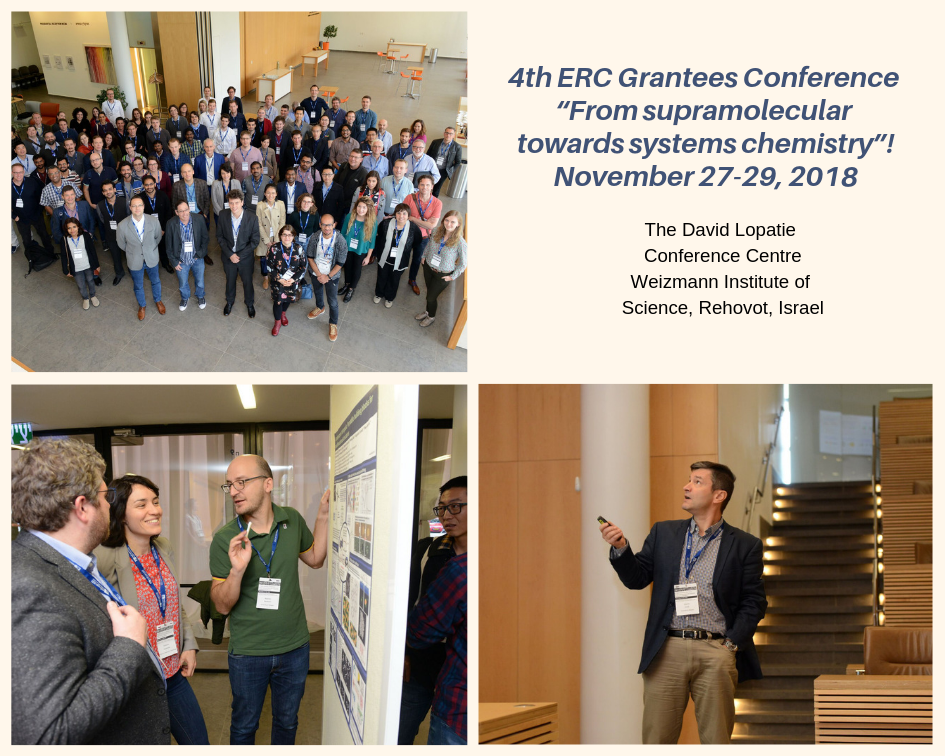
Since its inception a few decades ago, supramolecular chemistry has grown to become one of the key branches of contemporary chemistry. This growth has in part been fuelled by the realization that all life-related processes are essentially based on supramolecular chemistry, which has the potential to not only generate new families of active, adaptive, dynamic, self-healing, and environmentally friendly materials, but, in the long run, to address one of the most fascinating questions in science – namely, how life began.
The ERC Grantees Conference series aims to create an interdisciplinary forum for fostering interactions, encouraging collaborations, and facilitating further development of the field of molecular systems. In addition, these meetings aim to provide a platform for interactions between scientists supported by the ERC, such as our very own Prof. Alberto Credi, P.I. of the LEAPS Project, with emerging investigators interested in applying for ERC funding.
The 4th ERC Grantees Conference brings together some of Europe’s leading chemists focusing on such fields as Supramolecular chemistry, Dynamic and active materials and Photochromism and molecular switches and Systems chemistry.

Molecular Machine Days in Bologna welcomes 2016 Nobel Laureates in Chemistry
It is not everyday that you get to meet your scientific heroes. This past November was indeed an extraordinary opportunity for young researchers, scientists, professors, students and the Community at large as the city of Bologna welcomed the 2016 Nobel Laureates in Chemistry: Prof. Jean-Pierre Sauvage, Prof. J. Fraser Stoddart and Prof. Ben L. Feringa, as well as professor emeritus Prof. Vincenzo Balzani from the University of Bologna.
“Molecular machines: how they will change our lives” was the central theme in the lectures given of Prof. Sir J. Fraser Stoddart, Prof. Jean-Pierre Sauvage and Prof. Bernard L. Feringa, the three 2016 Nobel winners in chemistry, who were in invited to Bologna this past November to talk about their life, research and how they were able to reach their greatest achievements through the smallest devices known to man: molecular machines.
The use of molecular machines is truly infinite. Prior to the work carried out by these scientists in the molecular machinery sector, molecules were considered as stationary objects, or they moved randomly and then chemists suddenly realized that molecules can be transformed into machines, or they can stretch and shrink all at the control of humans.
How will these tiny machines change our lives? The possibilities are endless; from smart nanomaterials to biomedical applications, including drug delivery, diagnostics, nanosurgery, and biopsies of hard-to-reach tumors These tiny machines are expected to revolutionize many aspects of technology and medicine, leading eventually to major improvements in the quality of our lives.
The success of this monumental occasion is thanks to the partnership between the University of Bologna and the National Research Council of Bologna CNR Area di Ricerca di Bologna.
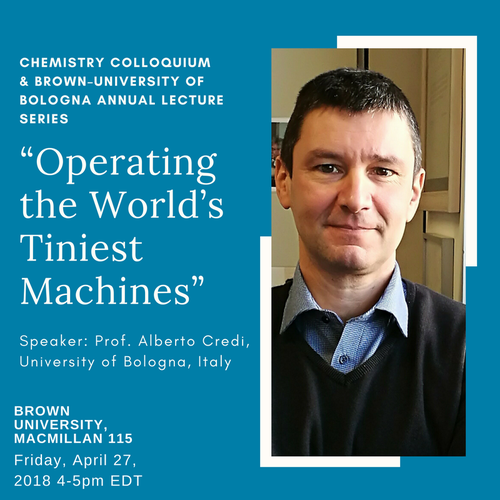
On April 27, Prof. Credi will give a fascinating talk on functioning machines at the molecular level at Brown University. Discover the endless applications of nanoscience and nanotechnology in the fields of chemical manufacturing, materials science, IT, energy conversion, medicine, just to name a few.
and learn how artificial molecular machines and motors have made it from laboratory curiosities to the Nobel Prize in Chemistry.
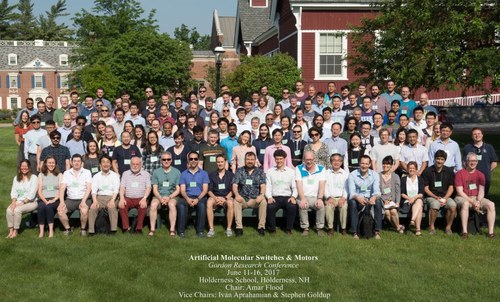
From the 11th to the 16th of June, LEAPS had the pleasure to take part in the Artifical Molecular Switches & Motors Gordon Research Conference at the Holderness School in Holderness, New Hampshire, USA.
Our very own ERC LEAPS group member, Jessica Groppi, was there to present her poster, "Light Effected Autonomous Pumps: toward the development of simple and efficient molecular devices".
We look forward to attending again next year!
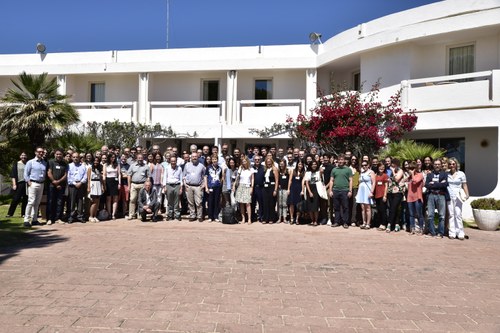
Congratulations to LEAPS team member, Lorenzo Casimiro, for winning "Best Short Oral Communication" at this year's Italian Conference on Supramolecular Chemistry in Cagliari. Lorenzo's talk was on light powered artifical molecular pumps. Way to go!
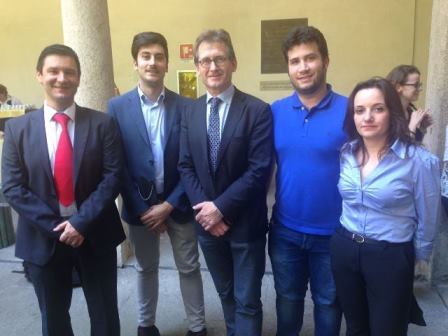
The LEAPS team with Nobel Laureate, Ben Feringa, at the University of Pavia for ERC Chemistry Day!
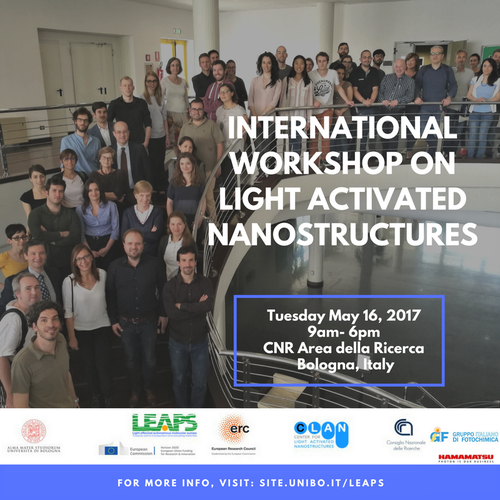
The International Workshop on Light Activated Nanostructures was held on Tuesday, May 16, 2017 at CNR Area di Ricerca di Bologna. It was a great success!
We would like to thank all our participants, sponsors and our invited guest speakers: Nathan McClenaghan, Université de Bordeaux, France; lse Manet, ISOF-CNR, Bologna; Serena Silvi, Dipartimento di Chimica ”G. Ciamician”, Università di Bologna; Uwe Pischel, Universidad de Huelva, Spain; Giacomo Bergamini, Dipartimento di Chimica ”G. Ciamician”, Università di Bologna; Julia Perez-Prieto, Universidad de Valencia, Spain; Andrea Barbieri, ISOF-CNR, Bologna; Elisabetta Collini, Dipartimento di Scienze Chimiche, Università di Padova; Rémi Métivier, Ecole Normale Supérieure de Cachan, France and Massimo Baroncini, Dipartimento di Scienze e Tecnologie Agro-Alimentari.
We would also like to thank Roberto Zamboni, Director of the Bologna CNR Campus.
LEAPS in the NEWS
-
Molecular Machines Days november 21-22, 2018 in Bologna
What are molecular machines and why they will change our lives. Jean-Pierre Sauvage, Sir J. Fraser Stoddart and Bernard L. Feringa - the three great scholars awarded the Nobel Prize in Chemistry in 2016. With them is also the professor emeritus of the Alma Mater Vincenzo Balzani.
-
-
Italian Chemistry Society
HIghlights of the CLAN Workshop 2017
-
The first artificial system in which remote parts of a molecule communicate by a dynamic mechanism. Nature uses an analogue strategy in the cellular respiration.
-
Rai.tv - RaiTre - TGR Leonardo
Ermes Project: Communication between Molecules